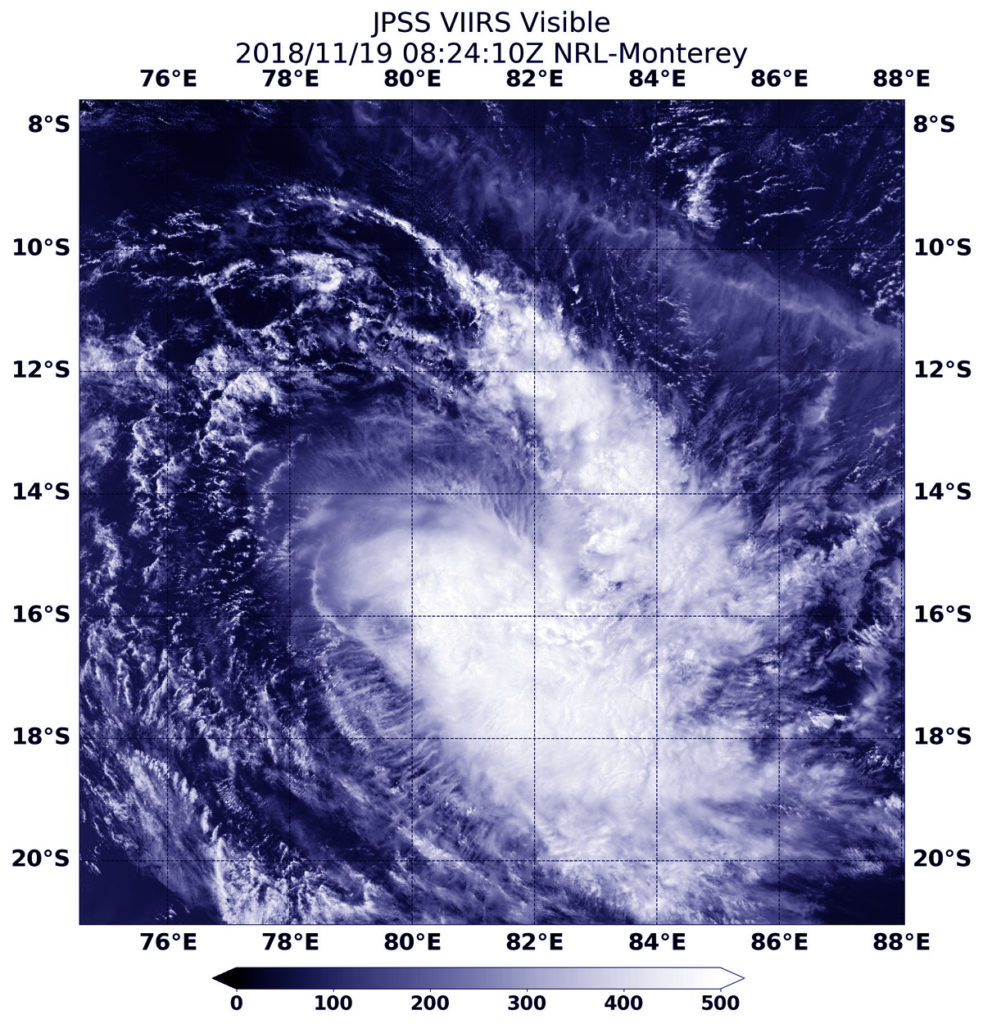November 19, 2018 – Satellite Finds Tropical Cyclone Bouchra Reborn in Southern Indian Ocean
Tropical Cyclone 04S, known as Bouchra formed in the Southern Indian Ocean during the week of Nov. 12 and by the end of the week it had become a remnant low pressure area. Over the weekend of Nov. 17 and 18 it regenerated into a tropical cyclone and the NOAA-20 satellite passed overhead and captured a visible image of the storm.

At 3:24 a.m. EDT (0824 UTC) on Nov. 19the Visible Infrared Imaging Radiometer Suite (VIIRS) instrument aboard the NOAA-20 polar orbiting satellite saw the elongated storm. The VIIRS image revealed that the storm appeared to stretch from northwest to southeast. That’s an indication that winds or wind shear was affecting the storm and elongating its circulation center, weakening the storm (again).
In general, wind shear is a measure of how the speed and direction of winds change with altitude. Wind shear can tear a tropical cyclone apart or weaken it.
On Nov. 19 at 10 a.m. EST (1500 UTC) Bouchra’s maximum sustained winds were near 50 knots (57 mph/92 mph) making it a tropical storm. It was located approximately 672 nautical miles southeast of Diego Garcia near 15.2 south latitude and 80.4 east longitude. Bouchra was moving southwestward and is expected to maintain intensity over the next several days before weakening.
Bouchra is expected to dissipate by Nov. 22.
NOAA-20 is the first in the JPSS series of satellites. JPSS is a collaborative program between the National Oceanic and Atmospheric Administration (NOAA) and its acquisition agent, the National Aeronautics and Space Administration (NASA). NOAA is responsible for managing and operating the JPSS program, and developing portions of the ground segment, while NASA is responsible for developing and building the JPSS instruments, spacecraft, and portions of the ground segment and providing launch services.
For more information about the JPSS series of satellites, visit: https://www.jpss.noaa.gov/
